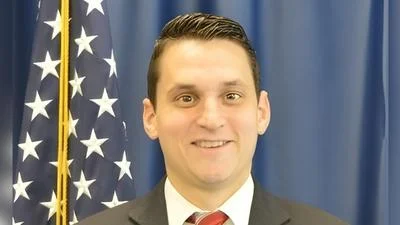Acting Commerce Secretary Rebecca Blank Remarks at Raleigh and Durham Chambers of Commerce, Durham, North Carolina Thank you, Governor Perdue and Ken (Atkins).
It’s great to be here with the Durham and Raleigh Chambers. And thank you to our hosts here at the Foundation.
The Triangle has been a center for innovation and economic growth and job creation for decades, and while we’ve been through some tough economic times, it’s clear that this area is once again serving as a vibrant location for new ideas and new businesses.
It’s easy to forget how quickly our economy was spiraling downward in the fall of 2008. The financial system was on the verge of collapse. Housing prices had plummeted, as did the stock market. Consumers weren’t spending. Businesses weren’t investing.
And jobs were disappearing at a breathtaking rate. We were losing 750,000 jobs every month. To put that in perspective, that’s the population of the city of Raleigh… plus Durham, plus Chapel Hill.
Americans were rightly concerned that we could be heading into a second Depression. We needed aggressive action. That’s why President Obama signed the Recovery Act less than a month into office.
Unemployment nationally–and in states like North Carolina–has dropped about two percent... and 4.6 million private sector jobs have been created over the past 30 months, including over 100,000 here in North Carolina.
But despite all these challenges, our economy has grown and will continue to grow.
Our challenge is to accelerate this growth... to make sure that it translates into greater prosperity for the middle class… and to make sure that everyone who wants a job has a job.
Today, I’d like to touch on four ways we can do that: increase consumer spending, spur innovation in manufacturing, increase insourcing and investments in the U.S., and grow exports.
First, we need to make sure that America’s families have the confidence and the ability to spend money on things they want and need–not just buying groceries and paying bills, but also big-ticket items like home renovations or a new car. As you all know, consumer spending is the single biggest driver of our economy.
In past recessions, economic recovery was driven by rapid increases in consumer spending. Coming out of this most recent recession, consumer spending has grown, but at a relatively moderate 2.1 percent annual pace. This isn’t surprising. Consumers had been on a debt-spree in the 2000s and needed to rein in their spending and rebalance their household finances. The steep losses in the value of people’s homes and 401K plans also made families cautious about spending.
To help boost consumer spending, the President has put about $3,600 more dollars in the hands of the average family over the past few years. Middle-class families put that money right back into the economy.
But here’s the problem: Unless Congress acts, some of the tax cuts that have helped middle class families will expire, taking money out of their pocket and making it tougher for them to make ends meet in 2013.
Let’s say you’re a family of four making $70,000. Without Congressional action, your taxes will jump by about $2,200.
Altogether, the middle class could pay about $180 billion more in taxes next year. That’s $180 billion they won’t be spending on goods and services.
That has a ripple effect–what economists call the multiplier effect. When a family puts off buying a new car, it hurts the local car dealership, it hurts the factories that make cars and car parts, and it hurts those that ship that inventory around the country.
So why hasn’t Congress acted? Some folks in Congress don’t want to extend tax breaks to the middle class, unless we also give breaks to the wealthiest two percent.
Now, we all know that the U.S. faces major long-term challenges with debt. If we’re serious about deficit control, we need to be smart and targeted with public dollars. We should give tax relief only where it’s needed–the middle class.
We’re asking Congress to return the top two perecent to tax rates that they paid in the '90s, a time when we had the fastest economic growth in U.S. history. This will provide some additional revenue to help balance the budget, while protecting America’s middle class. It just makes sense.
And Congress should act now, before the end of the year, to provide consumers with certainty about what their tax situation will be in 2013. That will help American families make informed spending choices and drive the biggest engine of our economy.
So our question today is this: How do we ensure that American manufacturing continues to grow and lead the world? In a word, the answer is innovation.
As we’ve watched the U.S. economy reinvent itself to compete in a tougher global environment, it’s increasingly clear that America’s ability to make things and our ability to innovate are tied closely together. If we want to stay at the front-end of innovation, we have to have production located nearby.
High-end manufacturing, that is, manufacturing that relies on high-tech new processes or that makes new productsis, is what’s going to keep us competitive.
The importance of innovation to manufacturing is clear: 70 percent of our private sector R&D is funded by manufacturing, and about 70 percent of our manufacturers rely on patents to protect their innovations.
So–looking forward–where should we focus? For starters, the president is working to reverse the erosion we’ve seen since 1980 in federal support for basic research and development, much of which supports our manufacturing base. He set a goal of doubling federal dollars in R&D over 5 years, and we’ve made a good start on that.
But another problem has emerged in recent years as companies have become more risk-averse. It’s this: Too many game-changing ideas still aren’t making it from the lab to the market.
I’ll share one initiative that the Commerce Department is helping lead–aimed at fixing this problem and improving tech transfer.
President Obama has proposed a National Network for Manufacturing Innovation. The idea is to set up 15 institutes around the country, each of which brings together a regional coalition of research centers and universities with manufacturers and local tech transfer groups. Together, they’ll collaborate on the most promising research areas and speed the tech transfer process.
I just went to Ohio to launch the pilot for this Network. It’s focused on additive manufacturing, also known as 3D printing. If you haven’t heard about 3D printing, you soon will. This technology helps entrepreneurs print customized consumer products and machine parts, it helps doctors print medical devices and even organ models, and it has the potential to help our military make parts as needed, instead of having to stock thousands of unique pieces of equipment at sea or on remote bases.
This pilot institute will set a research agenda, driven by private sector needs. It will encourage researchers and entrepreneurs to take risks, test prototypes, and, yes, hit brick walls…and get back up to try again.
It’s a public-private partnership, with funding from federal and state governments, and many manufacturers.
We’re going to be tracking this pilot closely, so we can learn how best to help foster these sort of collaborations that will help speed innovation in promising areas of technology.
Investing in innovation is only one important way to support a stronger, more innovative manufacturing base. Let me note two other areas in which we need to invest: our infrastructure and our workforce.
Third, and closely tied to manufacturing, we need to foster an attractive climate to increase investment into the U.S. There are two parts to this: Last year, the U.S. received $227 billion in foreign direct investment, money that flows into businesses in this country, and this is a sharp increase over the year before.
There are many factors driving these growing investments to the U.S.: On the domestic front, that’s why the president is calling on Congress to end tax breaks for companies that ship jobs overseas and–instead–give tax breaks to companies that bring jobs back.
And, through an effort called SelectUSA at the Commerce Department, we’re working to market the value of both staying in the U.S., if you’re a U.S. firm, or investing in the U.S., if you’re a foreign firm.
Again, I believe that we are poised for a boost in both domestic expansion and foreign direct investment in the near future. And we know that when a company builds a new factory here, the likelihood of jobs staying here long-term is very high.
So let’s take full advantage of this moment.
Finally, one of my favorite phrases to describe the mission of the Commerce Department is “Build it Here, and Sell it Everywhere.” To ‘sell it everywhere’ means strong U.S. exports–a fourth and final area I want to touch on. And it's great to see members of our North Carolina U.S. Export Assistance Center as well as members of the team based here in Raleigh.
Today, U.S. exports are at all-time record levels–hitting $2.1 trillion last year. We’re on track to break that record again this year. We want to build on the fact that, from 2009 to 2011, the number of export-supported jobs in the U.S. increased by 1.2 million.
As we look forward, we must continue to think strategically about which sectors and which international markets to focus on.
An example of a sector-specific focus is travel and tourism to the U.S. Just yesterday, we announced that $13.7 billion was spent by international visitors in July. That means we’re up nine percent year-to-date.
Not everyone understands that when foreign citizens travel to the U.S. and spend money buying our goods and services, that counts as an export. As you know, North Carolina gets a boost whenever someone visits the Outer Banks, or the Smokies, or comes here to the Triangle for a big conference.
I’m leading an effort throughout the Administration and with industry leaders to bring even more tourists to experience all that America has to offer. We’ve developed a National Strategy on Travel and Tourism, and as you may have heard just yesterday, we’ve already made great progress with efforts like reducing visa-processing times.
In addition to sector-specific efforts, another way to promote exports is to focus on key overseas markets where demand for U.S. good and services are growing fast.
India is one of those. In the Spring, my Department led a trade mission to India, bringing U.S. companies that were interested in helping the world’s largest democracy meet its burgeoning infrastructure needs. Among the companies that came along was LORD Corporation, based near here in Cary, which makes products that reduce noise and vibration in transportation systems.
We must continue to think in smart and creative ways about how to help American companies increase their exports. Because everything we sell abroad means more dollars and more good jobs here at home.
And make no mistake. We’re taking action when we see that American businesses and workers don’t have a level playing field. For example, we have doubled the rate of trade cases against China compared to the previous Administration. As you saw just this week, we just launched an action against China at the World Trade Organization for illegally subsidizing their autos and auto parts.
The president and I will continue to fight for American exporters because we know that when they can compete fairly on the global stage, they can win.
Clearly, overall, we need to take steps to ensure that our economy is, as the president likes to say, built to last.
So, let’s work together to ensure that America remains the global economic leader of the 21st century. Thank you.
Source: U.S. Department of Commerce








